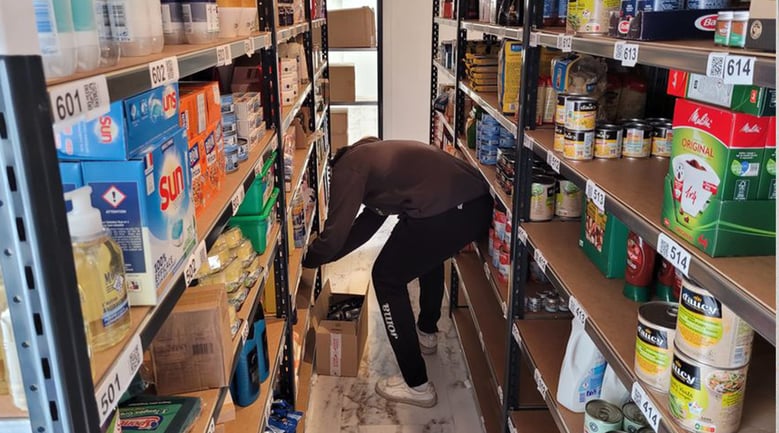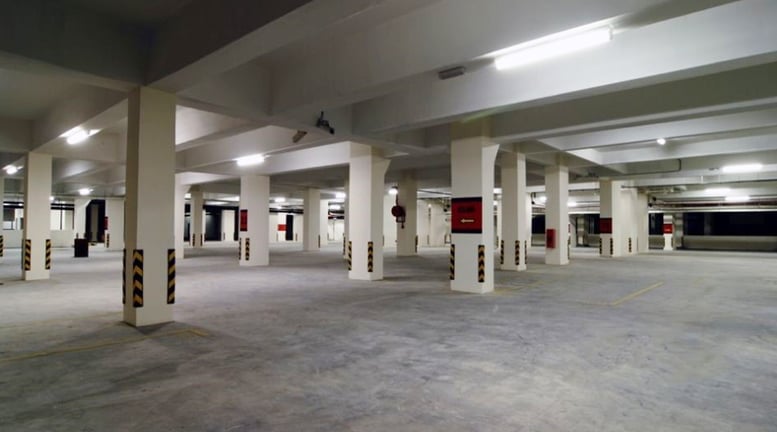Just like restaurants, shops have a side that’s hidden from the general public. As urban logistics evolve, more and more dark stores are appearing in city centres and shopping malls.
But what really drives the dark store phenomenon? A delivery in under 15 minutes? The availability of derelict downtown real estate and its renovation in the service of the client?
Whatever their secret, dark stores are turning the world of food retail upside down. Following the agreement between Carrefour and Cajoo, now it’s the turn of Casino to team up with German dark store heavyweight Gorillas.
Just a bubble, or a major trend? On the start-up side, investment has flowed freely, to the point where some projects are now budgeted in excess of a billion euros (or dollars):
Bulle ou tendance lourde ? Côté startup, les financements affluent à tel point que certaines levées de fonds dépassent maintenant le milliard d’euros (ou de dollars) :
- Gorillas in Germany
- Getir n Turkey
- Gopuff in the USA
- Meanwhile, the big historical players are entering partnerships or launching their own initiatives.
What should we make of all this ? How does this dynamic link to already-established trends in the world of omnichannel logistics, such as micro-fulfilment and warehouse automation?
 Gorillas is one of the emerging dark store players in France. It specializes in express food delivery. © Gorillas
Gorillas is one of the emerging dark store players in France. It specializes in express food delivery. © Gorillas
What is a dark store?
Definitions vary widely, but most dark stores occupy previously-derelict sites that were invisible to the public and have been converted into small distribution centres that are very close to end customers and dedicated to order picking and short-hop delivery.
Dark stores are an application of the micro-fulfilment model. They can be attached to an existing store or operate completely independently.
A dark store processes a large number of orders in a very limited space, and obviously this acts as a stimulus to the installation of automation solutions. Un dark store combine la nécessité de traiter un grand nombre de commandes dans un espace très limité, ce qui incite évidemment à étudier les solutions d’.
 The operator prepares the order in the dark store in the space of three to four minutes - © LSA
The operator prepares the order in the dark store in the space of three to four minutes - © LSA
Why are we talking so much about dark stores?
Dark stores are part of the trend towards ever-faster home delivery. Most deliveries are finalized using zero-carbon means of transport.
Dark stores also respond to the needto “return stores to the customer”. Retailers are fighting to win consumers back. They must therefore find a solution to prevent the aisles of their stores from being cluttered by employees preparing orders for home delivery.
Finally, dark stores usefully complement click and collect, drive-in and walk-in collection points to meet the imperatives of quick commerce.
In the food sector, demand increased exponentially during the various lockdowns, and remains at a high level.
According to Nielsen, e-commerce was the most dynamic food retail channel in 2021 and has overtaken local retail, with 9% of sales compared to 8.4% for the local circuit according to data gathered on 13 June [Source = Le Monde, 12 September 2021].
The challenge for high-speed delivery is the logistics of the last mile, which requires stock to be present and available in the heart of the city.
Something that may also contribute to the popularity of the term “dark store” is its resonance with “dark web” (the hidden part of the world- wide web that hosts illegal activities) and “dark kitchen” (a restaurant without a dining room, whose food is intended for delivery only).
Dark stores are now beginning to attract negative publicity, especially from some politicians, who oppose them in their efforts to defend local trade, combat nuisances and preserve a certain idea what a city should be.
Setting up a dark store - what it takes
In an attempt to limit property costs, which are generally very high in the city centre, supply chain operators are increasingly turning their attention to abandoned sites often hidden from public view:
- Basements,
- Vehicle parks,
- Garages,
- Retail surfaces with insufficient yield are also candidates for conversion to dark stores.
 © Surfaces with insufficient yield are candidates for conversion to dark stores.
© Surfaces with insufficient yield are candidates for conversion to dark stores.
The dark store concept is still very new, and retailers often start with a floor area of about 100 m², gradually expanding this area to about 1000 m².
The key concern is obviously to deliver to the customer without causing disruption. In the case of converted basements and vehicle parks, easy access to the road network is important. And in street-level locations, more and more dark stores are opting to bring their loading zones indoors by setting aside a zone designated for this purpose.
Finally, stock has to be replenished regularly, and therefore the store has to be able to receive deliveries. Some dark stores also have rest facilities for delivery personnel.
Inside a dark store, the shelves are organized in a manner more in keeping with a warehouse than a shop. For instance, products are arranged by popularity to optimize picker trajectories and thereby reduce order picking times. The larger dark stores can hold up to 5000 stock items.
The major food retailers, meanwhile, already occupy large sites in urban centres. Many are now thinking of converting some of their floor space for use as dark stores which operate in tandem with the conventional stores.
Most dark stores also operate under various constraints of space:
- Confined operating area,
- Low ceiling height,
- Piers/pillars.
Depending on the case, automation may still prove to be a sensible option.
Farmy, for example, converted an old wine cellar in the heart of Zurich into a dark store using Scallog's Flexypick solution.
 The Flexypick solution in the Farmy logistics hub in Zurich - © Scallog
The Flexypick solution in the Farmy logistics hub in Zurich - © Scallog
So what’s next: dark cities?
Demand for ultra-fast, affordable and environmentally friendly delivery is an established fact. Today, this type of e-commerce is attracting investments in the order of billions of euros, and the major food retailers are jostling for position in a growing niche market.
So it’s a tendency which has now transcended its immediate cause, the pandemic. More dark stores are opening all the time, but operators are also looking at how to increase the size of existing dark stores and thereby offer more products.
The dark store itself is just one part of the near-immediate delivery model. It may be necessary to restock shelves several times a day, for example, and this has its effects on the upstream supply chain.
Today’s logistics operators and retailers need to be able to rapidly scale their warehouses to suit demand : by spreading deliveries across several dark stores, for example, or by consolidating several existing workflows into one. This requires increasingly flexible automation solutions - Olivier Rochet, CEO Scallog
The dark store phenomenon is currently limited to food and drink, but it will soon expand into other areas. The DIY sector, for example, saw an explosion in demand for home delivery during the Covid-19 crisis, and employees charged with picking orders in stores deserted by customers frequently complained of the unsuitable way products were arranged on the shelves.
Some retailers now plan to open dark stores next to their existing stores, which are then transformed into showrooms, or even in replacement of smaller stores in urban locations.
The need for guidance remains to be addressed, and the pace of restocking accelerated.
The term “dark store” may have a sinister ring to it, but it’s safe to say we’re still a long, long way from living in dark cities - or even imaging such a possibility. What this new, ultra-rapid logistics model forces us to question, however, is the role of the store and the experience offered to the consumer.
The good news is that the new model is being taken up almost everywhere, especially by hypermarkets in their efforts to secure the loyalty of French consumers [source: LSA of 13 October 2021].







Laisser nous votre commentaire